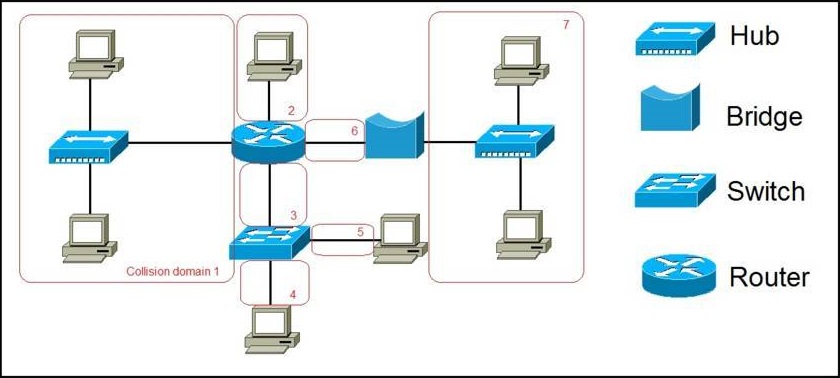Collision domain explained
The term collision domain is used to describe a part of a network where packet collisions can occur. Packet collisions occur when two devices on a shared network segment send packets simultaneously. The colliding packets must be discarded and sent again, which reduces network efficency.
Collisions occur often in a hub environment because all devices connected to the hub are in the same collision domain. Only one device may transmit at time, and all the other devices connected to the hub must listen to the network in order to avoid collisions. Total network bandwidth is shared among all devices.
In contrast to hubs, every port on a bridge, switch, or a router is in a separate collision domain. This eliminates the possibility of collisions and enables the devices to use the full-duplex mode of communication, which effectively doubles the maximum data capacity.
To better understand the concept of collision domains, consider the following example:
In the picture above you can see a network of seven computers, two hubs, a bridge, a switch, and a router. The collision domains created by these devices are marked in red. Remember, all devices connected to the hub are in the same collision domain. Each port on a bridge, a switch or router is in a seperate collision domain. That is why there are seven collision domains in the network pictured above.




